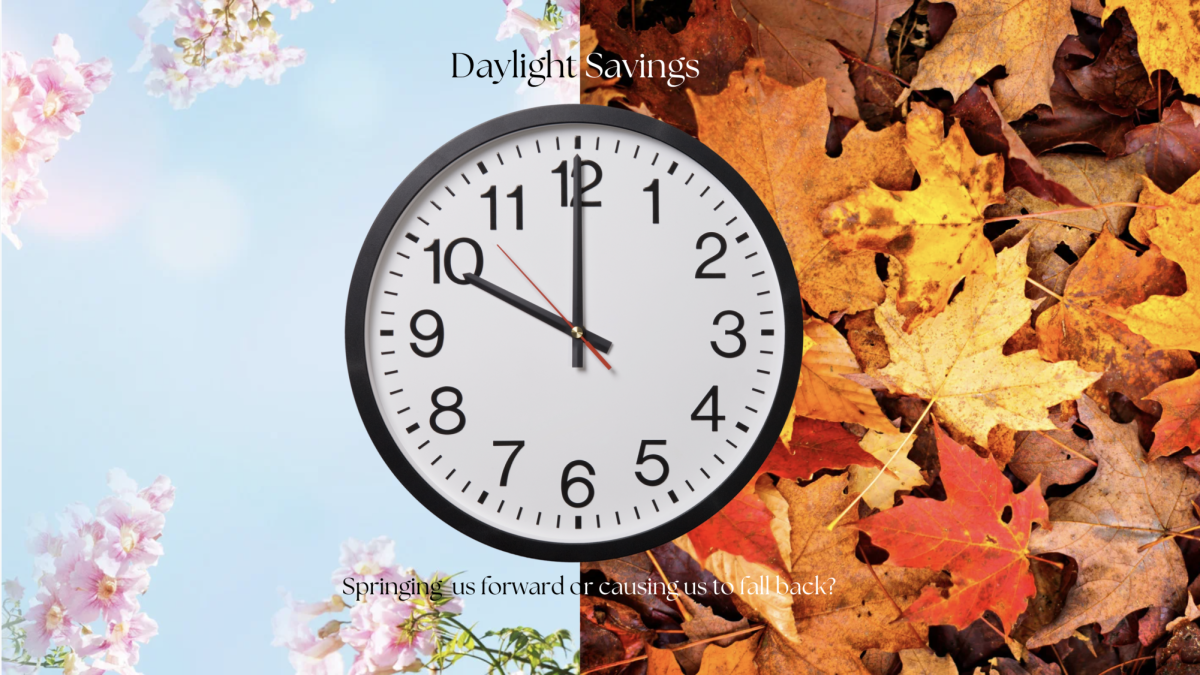
Every year, daylight savings sparks a debate amongst all. Many are not fans, concerned about their lack of sleep, while some actually enjoy the time changes between seasons. Now three weeks into the change , the question is: Does daylight savings really spring people forward or does it cause humans to fall back?
Daylight Saving Time (DST) became a federal law in 1966 and has affected 48 out of the 50 states in America, those exceptions being Hawaii and Arizona. This law was officially implemented to promote the adoption and observance of uniform time within the standard time zones in the U.S. However, many Americans detest Daylight Saving Time–the majority of complaints being “lack of sleep” and “increased health risks.”
Junior Jordyn Lavergne feels very strongly about getting rid of Daylight Saving Time once and for all. “I just think it’s so unnecessary,” Lavergne explains. “Why can’t we just stick with the same time all year round?” Lavergne then goes on to mention the effects that Daylight Saving Time can have on the body. “Sleep disruption is a major downside that comes with Daylight Saving Time,” states Lavergne. “We all have our own sleep schedules that work perfectly for us just for it to get disrupted every year, so then we have to readjust again.” Another key reason why Daylight Saving Time isn’t popular amongst many Americans is the possible health risks that come along with it. According to John Hopkins Bloomberg School of Public Health, the change of time has been linked with a “heightened risk of mood disturbances and hospital admissions, as well as elevated production of inflammatory markers in response to stress.”
While Daylight Savings time could have some negative effects on people, it may also have positive effects, as well! Shifting the daylight hours to later in the evening could lead to an increase in safety and economic benefits. With it staying lighter outside later in the day, the crime rates go down, and it encourages more people to shop after work, potentially boosting retail sales.
Junior Alice Rupard believes that Daylight Savings Time can be a positive occurrence for everyone. “I feel like it is perfect between the seasons changing,” expresses Rupard. “With it staying lighter out right around the time the seasons change, it feels even more like spring. I don’t think the beginning of spring would feel like that if Daylight Savings Time didn’t exist.” Since the daylight hours shift later in the evening, the more exposure people are having to sunlight can help the body produce Vitamin D, which is essential for healthy immune function. “I also feel like Daylight Savings Time could improve physical health,” Rupard states. “People have more time to go on jogs or play sports when it’s lighter outside.”
Daylight Savings Time is a huge adjustment for Americans, whether it is positive or negative. From the possible lack of sleep and increased health risks to embracing the daylight in the evening and more outdoor activity, do the negative effects seem to outweigh the positive? Quite literally, time will tell.
